Vegetable Milk (from oats, sweet potatoes, coconut, almonds and rice) – 5 very easy and achievable recipes to replace milk (and lactose) in foods, with their advantages.
Vegetable Milk (from oats, sweet potatoes, coconut, almonds and rice) – 5 very easy and achievable recipes to replace milk (and lactose) in foods, with their advantages.
Recipe for 4 people.
Classic (no restrictions), Gluten Free, Gluten and Lactose Free, Lactose Free, Vegan, Vegetarian
Prep: 1am + (average time) + soaking time for some options
Interval: 00:00
TOOLS
1 kettle, 1 bowl(s), 1 strainer(s), 1 strainer
EQUIPMENT
METERS
cup = 240 ml, spoon = 15 ml, teaspoon = 10 ml, teaspoon = 5 ml
Ingredients OAT MILK
– 2 cups gluten-free oat flakes hydrated in filtered water – see recipe (reserve the oats for other preparations)
– 6 cups of water, filtered
YAM MILK ingredients:
– 2 units shelled sweet potatoes, chopped – see more information in the preparation method
– 5 cup(s) of water, filtered
COCONUT MILK Ingredients:
– 2 cups dry grated coconut – fresh (only the pulp)
– 5 cups of hot water.
ALMOND MILK Ingredients:
– 2 cup(s) raw unsalted almonds, shelled and soaked (see recipe)
– 6 cups of water, filtered
RICE MILK Ingredients:
– 2 cups homemade cooked rice – see recipe (white or brown)
– 5 cup(s) of water, filtered
– vanilla essence to taste
PREPARATION:
Vegetable Milk or Vegan Milk – 5 options (introduction):
Milk, by “nature”, is a food of animal origin and contains lactose, a sugar present in it and its derivatives. For those who have an intolerance, one of the problems is looking for foods that do not contain this substance.
To replace milk and the inconveniences that some people have with its consumption (most often linked to lactose), there are alternatives to produce what is called vegetable milk at home.
For Anvisa, for example, “Coconut Milk” is “an aqueous emulsion extracted from a vegetable using appropriate mechanical processes”.
And so options emerge such as oats, yam, coconut, almonds and rice “milk” (among others), very easy to prepare and particularly useful in situations of intolerance.
But it is important to consider how milk (of animal origin) is an important source of proteins, its replacement with vegetable milk must be carried out in order to replenish these proteins with other foods. Therefore, before making any substitutions yourself, consult a nutritionist.
- Difficulty: Easy
- Durability: On average, vegetable milk lasts 3 days in the refrigerator* (use sterilized containers, preferably glass).
PREPARATION:
I) Oat milk:
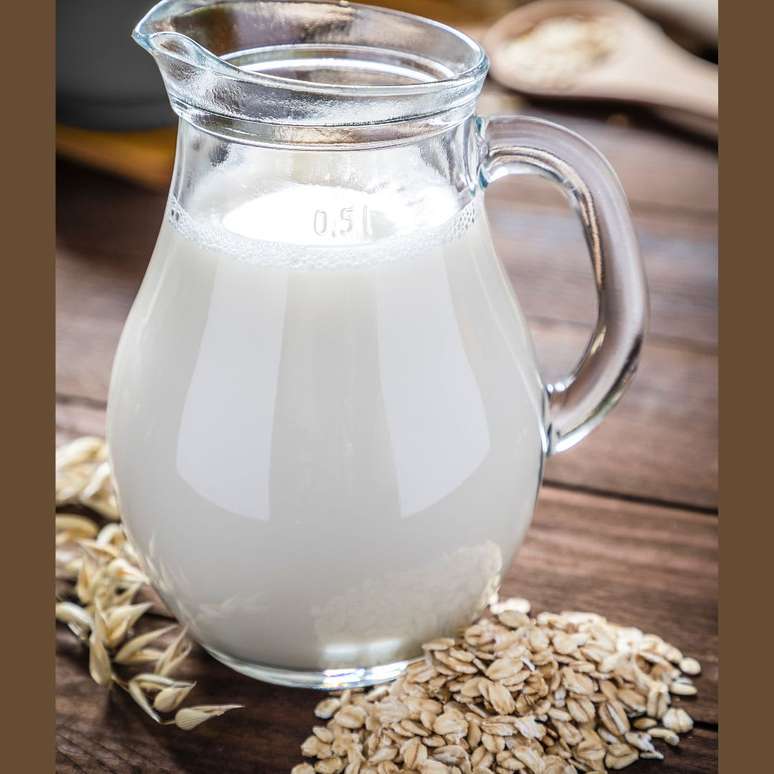
- In a bowl, immerse the oats in boiling water (enough to cover). Cover and let hydrate for 30 minutes at room temperature.
- If you have more time, let the oats soak in filtered water (enough to cover) for 6 to 8 hours (overnight), covered in a closed cabinet, at room temperature.
- Then drain the excess water from the oat milk, reserving this liquid.
- Place the oats in the blender with the amount of water indicated in the ingredients (use part of the soaking water – probiotic – and add more filtered water).
- Whisk for 1 minute – don’t beat too much as this will activate the starch and make the milk sticky.
- Filter through a fine mesh strainer or a cloth and reserve the oats for other preparations such as cakes, tarts, etc.
- Advantage: Very feasible from an economic point of view, as oats are cheap and are also quite rich in fibre. The residue from the beaten oats can be used to make cakes and other products that contain the ingredient.
- Downside : Oats may contain gluten and are therefore not suitable for a gluten-free diet unless the manufacturer states on the packaging that they are 100% free of cross-contamination. Some recipes call for mixing oats with warm water, which makes the “milk” creamier, but makes the filtering process more difficult.
II) Yam Milk:
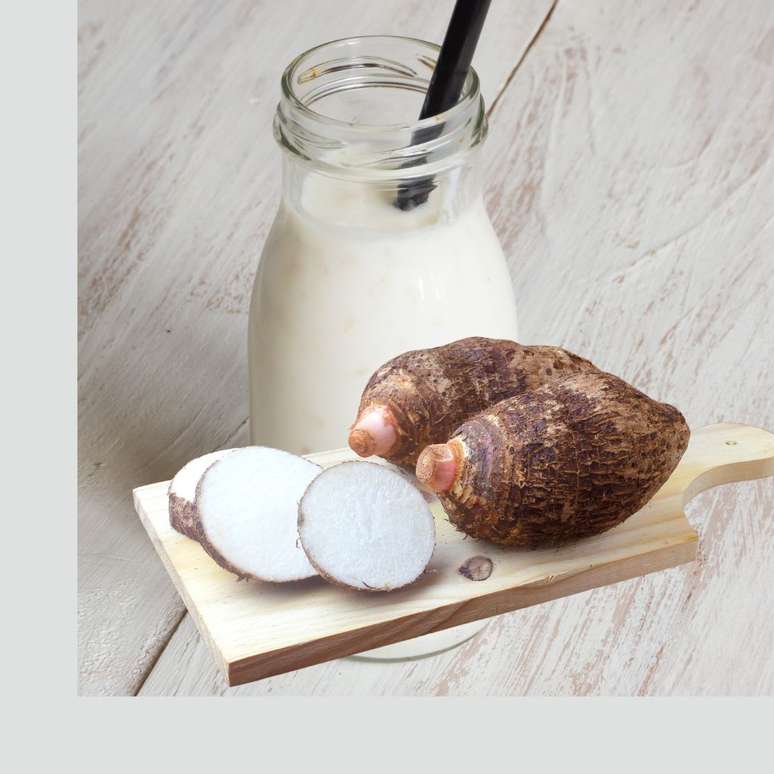
First we need to clear up some confusion about what sweet potatoes (really) are. Cará (Dioscorea alta) is a climbing herbaceous plant, with feculent tubers, which in some regions is often confused with yam. This confusion is due to the character’s name in Spanish (ñame) and Italian (igname).
Real Yam has the scientific name of “Colocasia Esculenta”and is popularly known as bull. It is a typically tropical tuber native to southern Asia. The edible part is the underground stem which has pulp and white leaves.
Both yam and yam should be eaten cooked, because they contain indigestible substances and can harm the body.
- Peel the potato, chop it and place it in a pan with cold water, bring to the boil, lower the heat and cook for another 5 minutes or until cooked.
- Remove the yam from the heat, discard the water, wash it well.
- Place cooked yam (taro) in a blender with filtered water (see amount in ingredients).
- Beat well and add the remaining water until you obtain a thick milk.
- Strain and store for use in your recipes.
- Advantage: Non-dairy yam milk comes at a good cost, making its use feasible $$$. It is very creamy, since yam contains starch, which when heated becomes a thickener.
- Downside: it may not be found as easily as other roots and there is still “confusion” about yam (in the lyrics we don’t know which yam people are referring to, be careful!). But it is a fact that taro yam should only be consumed cooked to avoid causing discomfort and some unwanted reactions during consumption (ditto for yam, which we are not concerned with here, but is worth mentioning).
III) Coconut milk:
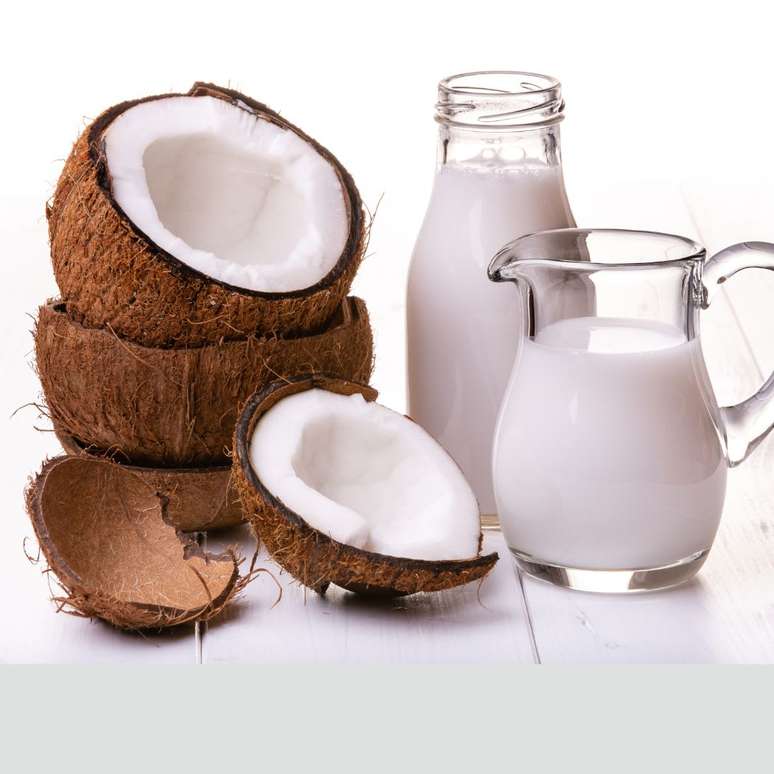
-
Blend the ingredients in a blender, filter, leave to cool.
- Advantage: It is a more well-known flavor and can also be purchased ready-made. It is also a very valid option from an economic point of view and is often found “ready-made”, industrialized more easily.
- Downside: Removing coconut meat is a lot of work, and fresh coconut isn’t always easy to find. The best thing to do is to buy just the pulp if possible. In milk the pulp is only the white part. Although it is beneficial for health, coconut meat has a higher concentration of fat and excessive consumption is not recommended.
IV) Almond Milk:
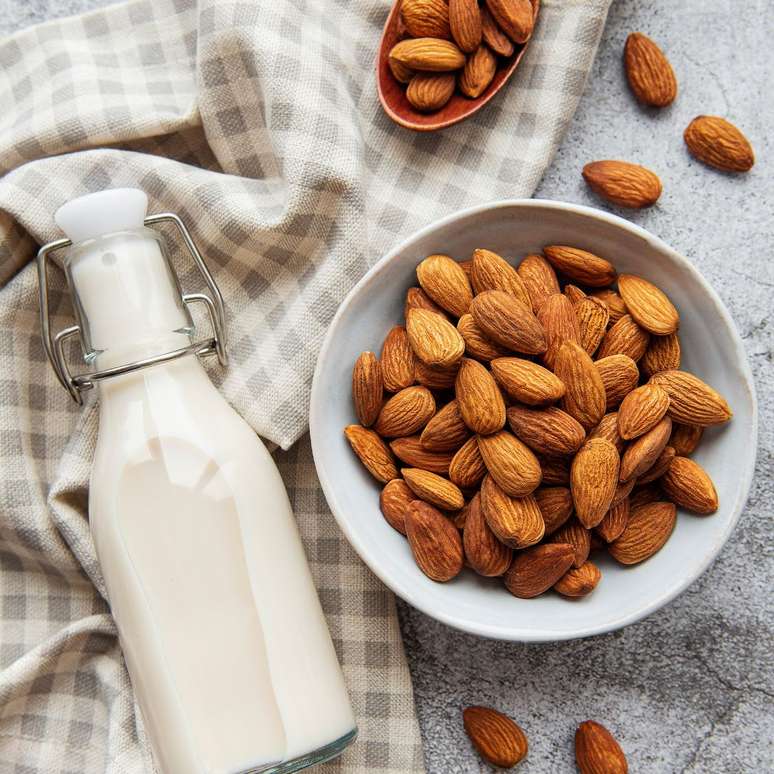
- In a deep bowl, place the almonds.
- Add enough water to cover them completely.
- Leave to soak, covered with cling film or covered for at least 12 hours.
- Drain this water and blend it in a blender with filtered water (measurement indicated in the ingredients).
- Strain through a sieve or fine sieve (since the granules cannot pass through the sieve).
- Advantage: It combines flavor (sweet) with excellent nutritional properties (“good fats”). Leftover almonds can be used to make delicious desserts and cakes.
- Downside: The soaking time (leave it overnight and you won’t even notice…) and the cost of the almonds make this milk expensive. It’s still much cheaper to make it at home, but even so, almonds aren’t cheap.
V) Rice Milk:
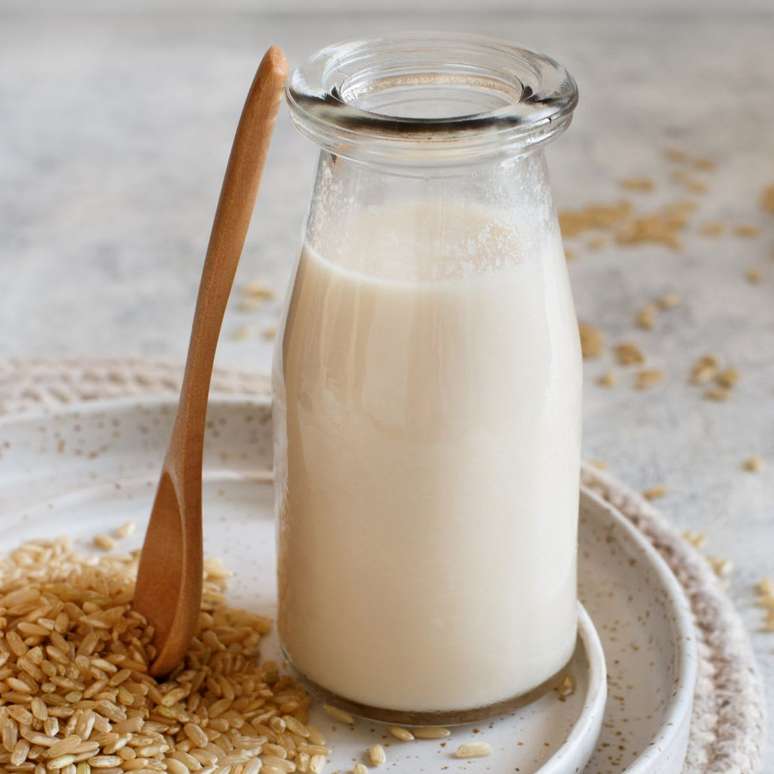
- Whisk the cooked rice with the filtered water, strain through a sieve or fine strainer and set aside.
- Advantage: If you use brown rice, there will be better utilization of nutrients (carbohydrates) and the “milk” will have better nutritional value (more fiber and vitamins).
- Downside: With a thin consistency and a characteristic rice flavour, it is recommended to add vanilla essence to neutralize this flavour.
FINALIZATION AND ASSEMBLY:
- Recipes for vegetable milk OR vegan milk They are very simple and can be made at home easily and at a very affordable cost (most of them). Follow the preparation instructions, store in the refrigerator and use as a drink or in multiple recipes.
Sources:
-
Nutrition and dietetic technique – Sonia Tucunduva Philippi, 2nd edition.
-
Anvis
Do you want to make this recipe? Access the shopping list, HERE.
To see this recipe for 2, 6, 8 people, Click here.
Create your personalized menu for free on Bake and gourmet cakes.

Source: Terra
Ben Stock is a lifestyle journalist and author at Gossipify. He writes about topics such as health, wellness, travel, food and home decor. He provides practical advice and inspiration to improve well-being, keeps readers up to date with latest lifestyle news and trends, known for his engaging writing style, in-depth analysis and unique perspectives.

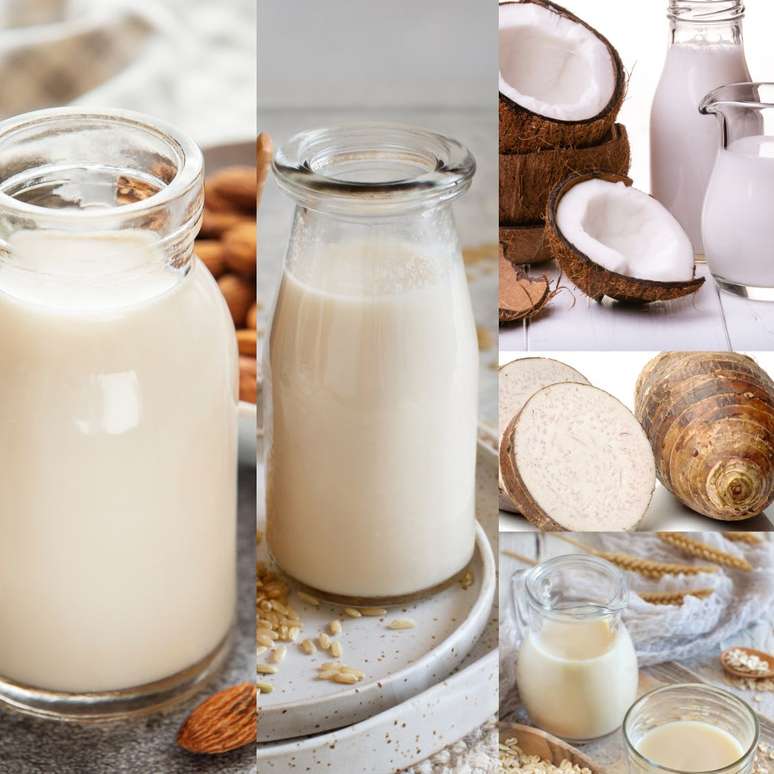
-1ibeskywkh3z8.png)




![Un Si Grand Soleil Preview: Episode Summary for Friday, October 24, 2025 [SPOILERS] Un Si Grand Soleil Preview: Episode Summary for Friday, October 24, 2025 [SPOILERS]](https://fr.web.img6.acsta.net/img/ab/a7/aba77ee421cfaa6486bd0d6d33453e84.jpg)
